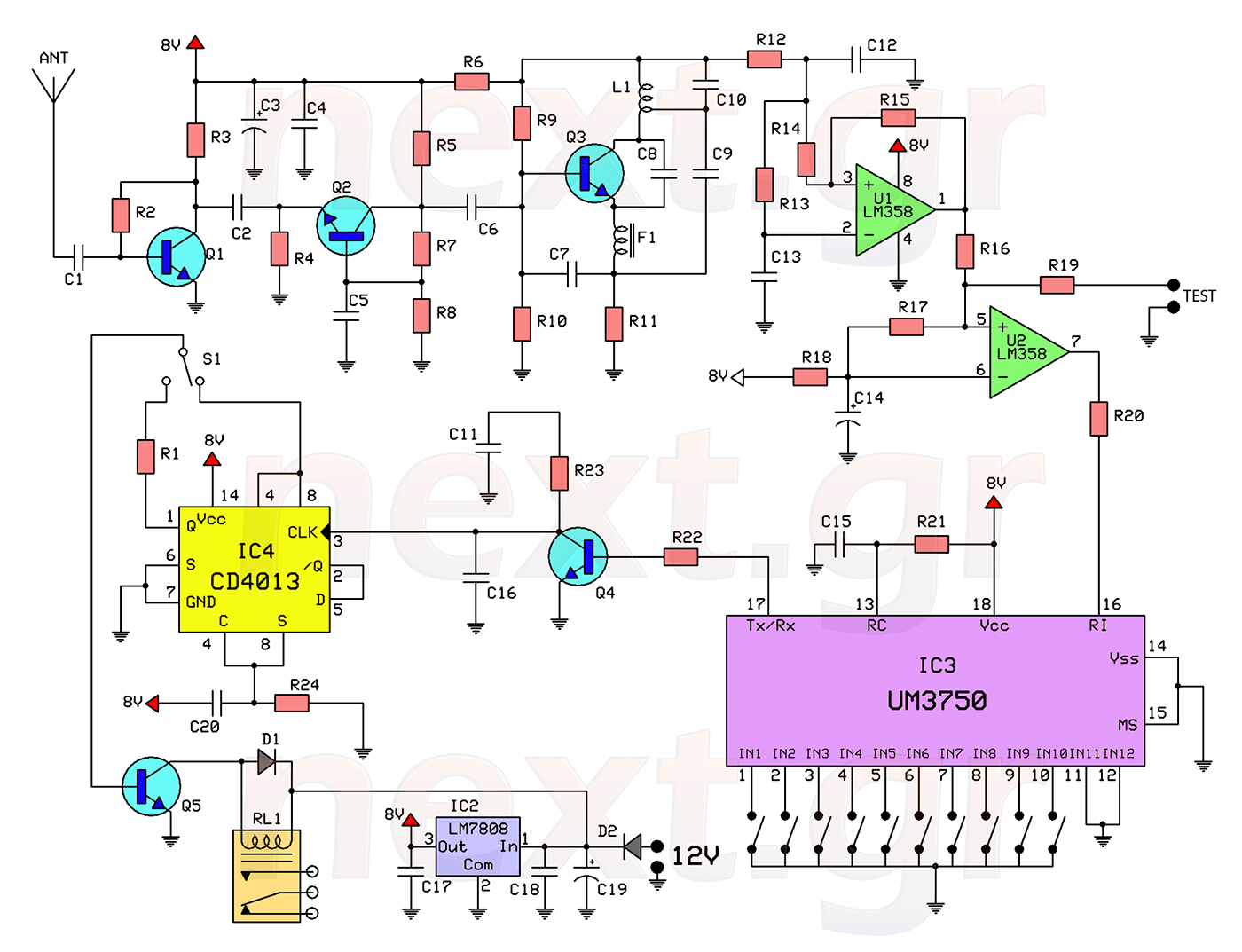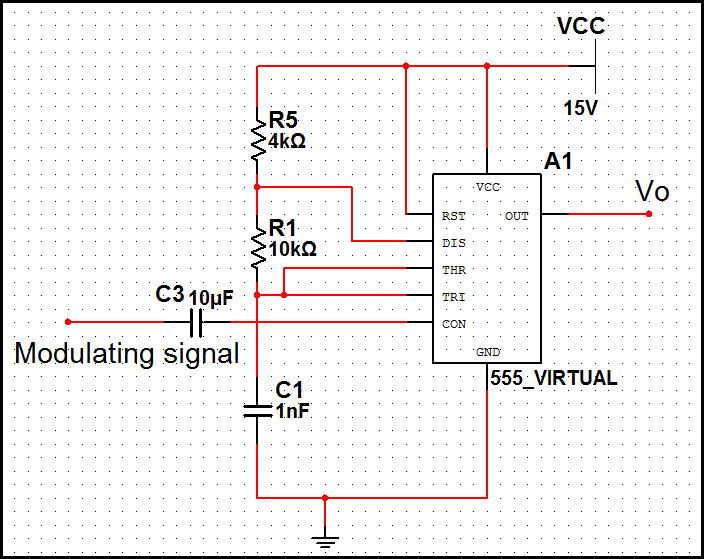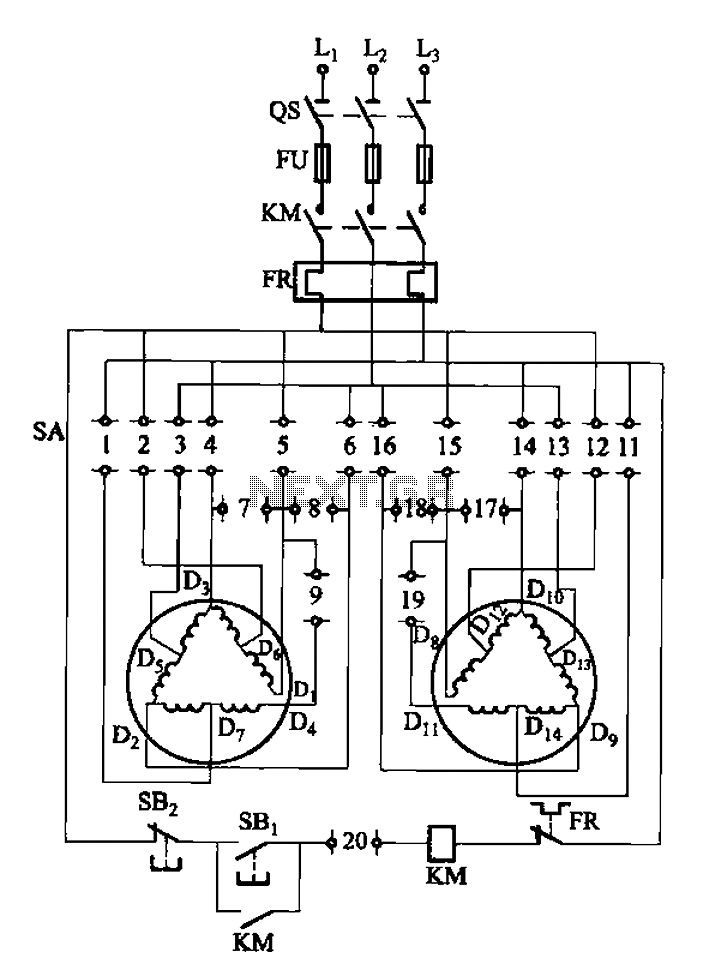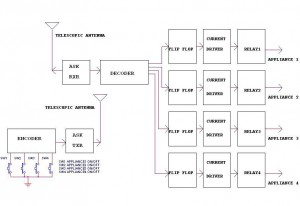
Simple Cable TV Amplifier Circuit

This cable TV amplifier circuit is an RF amplifier designed for quick installation between two coaxial cables. Both the input and output impedances are compatible with 75-ohm cables. The main amplifier is the T1 transistor, while T2 functions as an emitter follower. The feedback bias is set by resistors R3 and R4. Due to the high frequency limit of the transistors (up to 2 GHz), the TV amplifier operates effectively up to 150 MHz. It must be housed in a metal case, and the coaxial cables must be of the 75-ohm type. The total current consumption of this TV cable amplifier circuit is approximately 20 mA.
The cable TV amplifier circuit is engineered to enhance the signal strength of RF signals transmitted through coaxial cables. The design includes two primary components: the T1 transistor, which serves as the main amplification element, and the T2 transistor, configured as an emitter follower to provide impedance matching and improved linearity. The input and output stages are designed to maintain a 75-ohm impedance, which is crucial for minimizing signal reflection and ensuring optimal performance in cable television applications.
Resistors R3 and R4 play a vital role in establishing the feedback bias for the T1 transistor, allowing for stable operation and consistent gain across the specified frequency range. The circuit is optimized for frequencies up to 150 MHz, making it suitable for standard cable TV signals. It is important to note that while the transistors can theoretically operate up to 2 GHz, practical performance is limited to lower frequencies due to factors such as parasitic capacitance and the inherent characteristics of the components used.
Housing the circuit in a metal case is essential for shielding against electromagnetic interference (EMI), which can degrade signal quality. The choice of 75-ohm coaxial cables is also critical, as using mismatched impedance can lead to signal loss and distortion. The overall current consumption of approximately 20 mA indicates a low-power design, making it efficient for continuous operation in residential or commercial settings.
In summary, this cable TV amplifier circuit is a robust and efficient solution for boosting RF signals in coaxial cable systems, with careful attention given to component selection, impedance matching, and shielding to ensure high performance and reliability in signal transmission.This cable tv amplifier circuit is a rf amplifier designed to be quickly installed between two coaxial cables. Both input and output impedances are compatible with 75 © cables. The main amplifier si T1 transistor, T2 is working as an emitter follower. The feedback bias is determined by R3 and R4. Because of the high frequency limit of transistors (<= 2GHz) the tv amplifier works well up to 150 MHz. It must be housed in a metal case and the coaxial cables must de 75 © type. The total current consumption of this tv cable amplifier circuit is around 20mA. 🔗 External reference
The cable TV amplifier circuit is engineered to enhance the signal strength of RF signals transmitted through coaxial cables. The design includes two primary components: the T1 transistor, which serves as the main amplification element, and the T2 transistor, configured as an emitter follower to provide impedance matching and improved linearity. The input and output stages are designed to maintain a 75-ohm impedance, which is crucial for minimizing signal reflection and ensuring optimal performance in cable television applications.
Resistors R3 and R4 play a vital role in establishing the feedback bias for the T1 transistor, allowing for stable operation and consistent gain across the specified frequency range. The circuit is optimized for frequencies up to 150 MHz, making it suitable for standard cable TV signals. It is important to note that while the transistors can theoretically operate up to 2 GHz, practical performance is limited to lower frequencies due to factors such as parasitic capacitance and the inherent characteristics of the components used.
Housing the circuit in a metal case is essential for shielding against electromagnetic interference (EMI), which can degrade signal quality. The choice of 75-ohm coaxial cables is also critical, as using mismatched impedance can lead to signal loss and distortion. The overall current consumption of approximately 20 mA indicates a low-power design, making it efficient for continuous operation in residential or commercial settings.
In summary, this cable TV amplifier circuit is a robust and efficient solution for boosting RF signals in coaxial cable systems, with careful attention given to component selection, impedance matching, and shielding to ensure high performance and reliability in signal transmission.This cable tv amplifier circuit is a rf amplifier designed to be quickly installed between two coaxial cables. Both input and output impedances are compatible with 75 © cables. The main amplifier si T1 transistor, T2 is working as an emitter follower. The feedback bias is determined by R3 and R4. Because of the high frequency limit of transistors (<= 2GHz) the tv amplifier works well up to 150 MHz. It must be housed in a metal case and the coaxial cables must de 75 © type. The total current consumption of this tv cable amplifier circuit is around 20mA. 🔗 External reference





